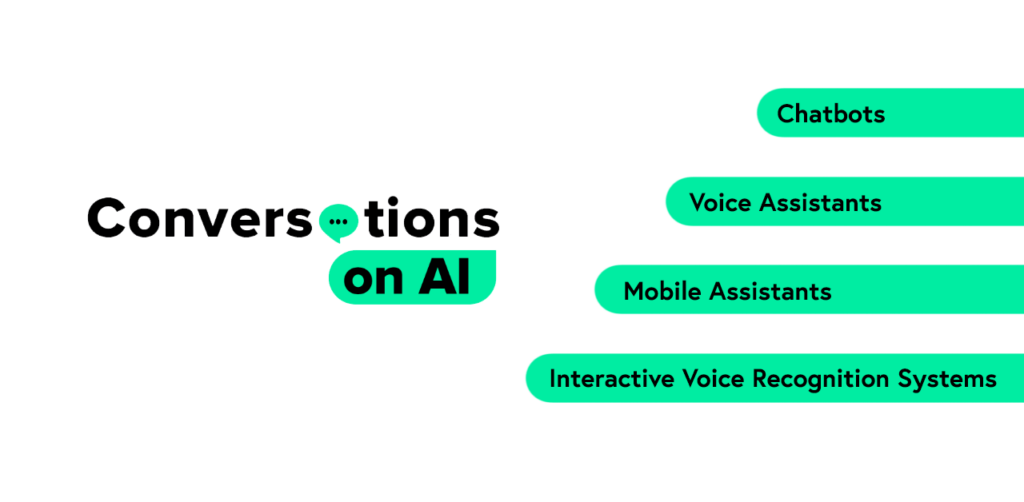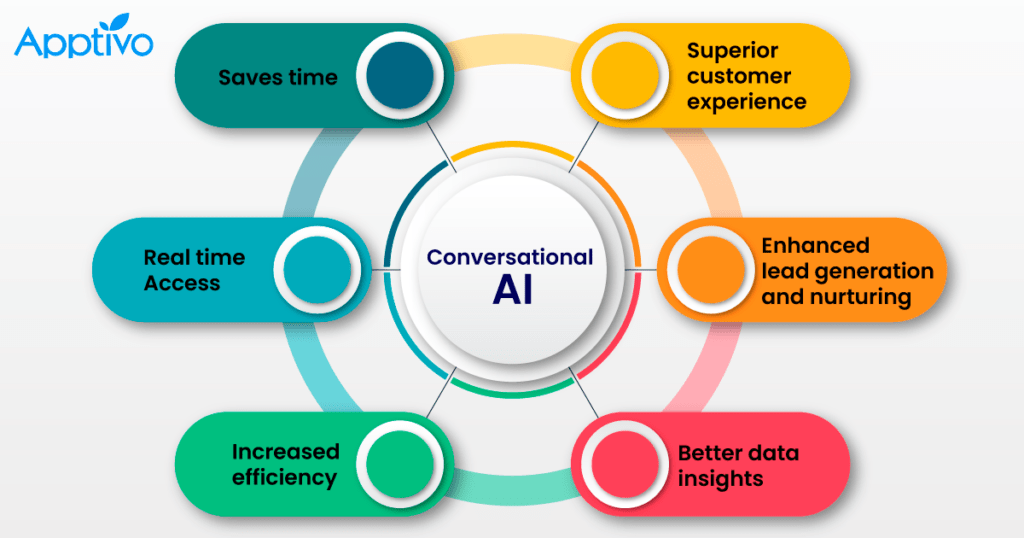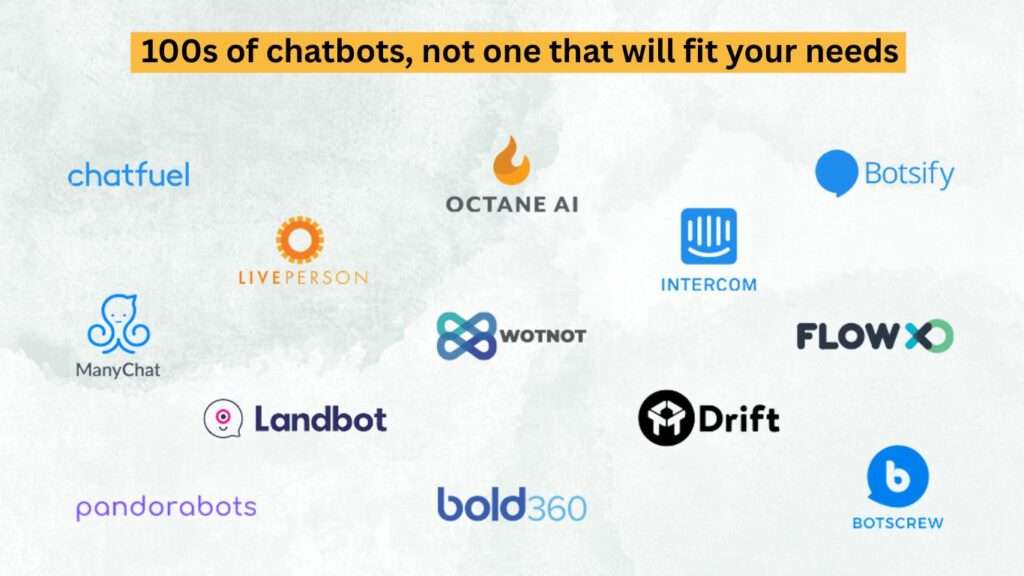Break down the differences between chatbots and Conversational AI. Understand how these digital tools are reshaping online interactions.

As the digital era continues to unfold, the presence of computer-powered assistance has given rise to an array of terms, including Chatbots, Virtual Assistants, and Conversational AI. These tools have become integral for businesses seeking to provide efficient customer service, reduce costs, and maintain engagement. The global chatbot market is poised to reach $9.4 billion by 2024, reflecting the widespread adoption of these technologies.
However, understanding the variation between them is crucial for businesses looking to enhance customer interactions and streamline operations. In this comprehensive exploration, we’ll delve deeper into the differences between Chatbots and Conversational AI, exploring their definitions, key distinctions, real-world applications, and the process of building effective Conversational AI chatbots.
What are Chatbots:
At its core, a chatbot is a computer program designed to mimic human conversation. Frequently found on websites or mobile apps, chatbots aim to provide instant responses to user queries. Two primary types of chatbots exist rule-based and AI chatbots. Rule-based chatbots follow predetermined flows, suitable for handling frequently asked questions (FAQs) and routine inquiries. However, their limitations become apparent when faced with questions outside predefined patterns.
What is Conversational AI:
Conversational AI represents a broader technological spectrum, leveraging natural language processing (NLP) and machine learning (ML) to facilitate advanced, two-way interactions. Unlike basic chatbots, it comprehends and processes human language, making it more adaptable and versatile. Examples of it include popular virtual assistants like Siri, Google Assistant, and Amazon Alexa.

Key Differences Between Conversational AI and Chatbots:
- Natural Language Processing (NLP): One of the fundamental distinctions lies in the ability of AI to understand everyday language, allowing users to communicate naturally, including the use of slang and local language.
- Ongoing Improvement: AI employs ML to learn from each interaction, continuously refining itself based on customer data and historical interactions. This adaptive learning contributes to a dynamic and improved chatbot over time.
- Omnichannel Capabilities: AI extends its support beyond traditional channels, comprising instant messaging, social media, and in-app interactions. This omnichannel approach provides customers with flexibility, enabling them to choose where they self-serve.
- Personalization: AI excels in surfacing relevant customer insights in real-time, enabling brands to tailor prompts, response tones, and the answer flows according to individual customer preferences.
Examples of Conversational AI:
Beyond virtual assistants like Siri and Google Assistant, businesses utilize Conversational AI to automate a significant portion of customer inquiries, encouraging trust, reducing costs, and preventing burnout. Conversational AI exemplifies a powerful tool for crafting engaging and personalized customer interactions.
- Conversational AI for Self-Service: Businesses can automate up to 90% of customer inquiries, including FAQs and common queries, fostering trust and loyalty while reducing costs per conversation and mitigating agent burnout.
- Conversational AI for Reducing Wait Times: In the case of AirAsia, AI reduced customer service wait times by a staggering 98%, resolving 75% of interactions using AI-powered chatbots. This led to a substantial increase in customer satisfaction.
- Conversational AI for Scaling Support: Retail companies, especially during peak holiday shopping seasons, leverage AI to handle spikes in customer service inquiries. Photobox, for instance, reduced operating costs by 15% with 24/7 self-service available in six languages.
- Conversational AI for Reaching New Markets: Businesses operating in multiple countries or expanding to new markets can leverage AI’s multilingual capabilities. Malaysian super-app Grab implemented an AI-powered digital assistant across six countries, reducing operational costs by 23%.
- Conversational AI for Consistency: Ipsy, a top beauty subscription brand, utilized AI to create a unified customer experience after acquiring BoxyCharm. This resulted in substantial savings and improved customer satisfaction.
- Conversational AI to Replace Legacy Systems: Established companies often rely on legacy systems, hindering their ability to provide digital-first customer service. Digicel, the Caribbean’s leading mobile phone provider, diverted conversations away from call centers, saving $750k in service costs.
- Conversational AI for In-Product Support: In-app support is crucial for a seamless customer experience. Tango Card reduced ticket volumes by 10% and achieved a 70% containment rate, significantly improving the average first response time.
- Conversational AI for Voice Automation: Conversational AI isn’t limited to digital interactions; it extends to voice channels. AI-powered voice bots, equipped with NLP and ML, provide a more natural interaction, lowering costs and allowing agents to focus on complex matters.

Building Conversational AI Chatbots:
Integrating new technology into a customer service stack can be intimidating, but with a no-code conversational AI platform, businesses can build powerful customer service automation with minimal effort. This approach empowers CX teams, rather than IT departments, to design, manage, and improve automation, ensuring a more personalized and efficient customer experience.
Choosing a platform that seamlessly integrates with existing business systems, including backend systems like Shopify and agent tools such as Zendesk, is crucial. This integration makes use of available information, accelerates resolution times, and facilitates personalized conversations. A multimodal platform ensures consistent customer service across both digital and voice channels.
With Natural Language Understanding (NLU) interpreting customer intent and advanced AI taking action, a chatbot becomes adept at resolving queries quickly. Adding generative AI to create conversational FAQs and continuously improving intent recognition transforms the chatbot into a strategic asset.
Conclusion:
As technological advancements continue, customer expectations rise in tandem. Leaders in customer service recognize the value of every available tool to provide the best possible experience. Conversational AI stands at the forefront, enabling brands to not only resolve queries efficiently but also empower agents and enhance the overall customer experience with each interaction. In an era where every interaction counts, Conversational AI is a powerful ally for businesses looking to stay ahead of the curve.




